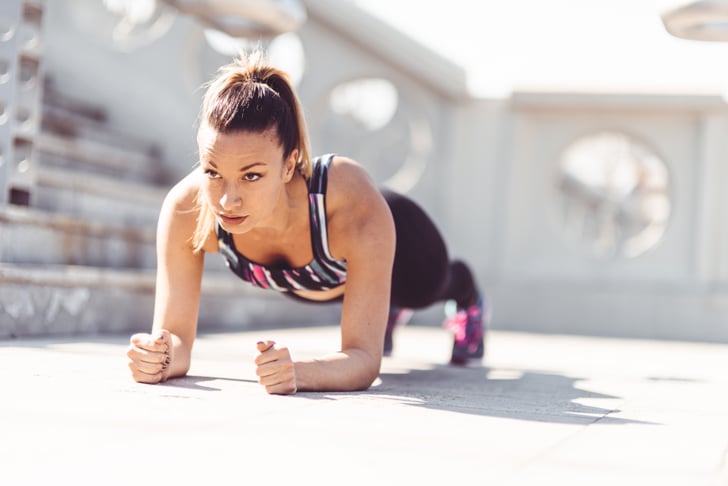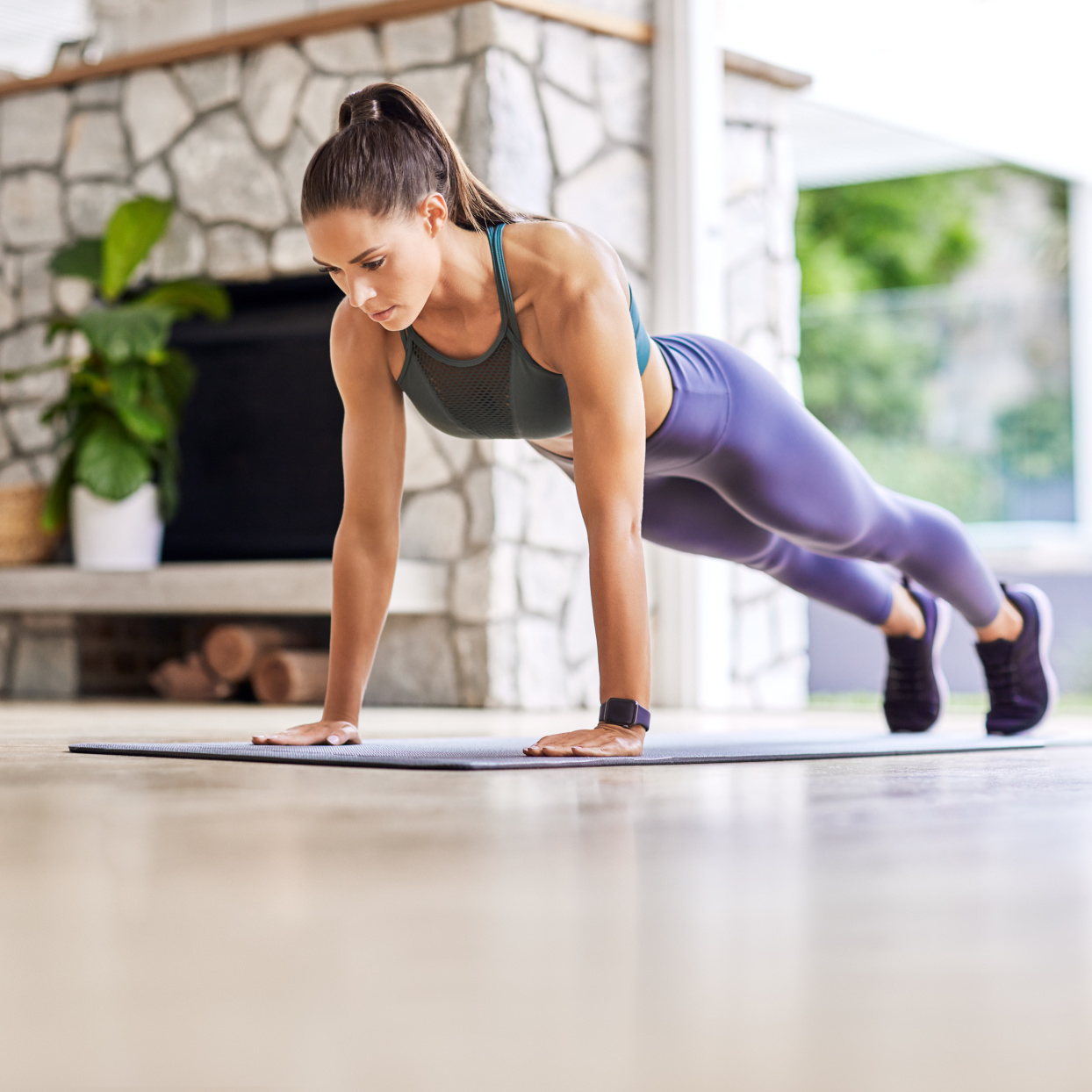With the stay-at-home program in place, it can be challenging to keep up a normal routine let alone a home workout for legs. According to the U.S. Department of Health and Human Services, only 1 in 3 adults gets the recommended activity per week.
If you do manage to get a workout in at home it might be push-ups or crunches but it’s vital to also work out the legs. They support everything from posture to looking proportionally balanced.
In this article, I’ll cover home workouts specifically for legs. I’ll go into picking the right workout type, the best type of leg exercises, four reasons why it’s beneficial to workout legs and give an example of a home leg workout. The article focuses on bodyweight exercises and no equipment is needed for the workouts.
Choosing the Right Workout Type
When it comes to bodyweight leg exercises, there are a couple general types. Depending on how you create the workout and what your goals are, you can focus on either strength, hypertrophy (muscle growth), power or conditioning.
Strength and Progression
Strength leg workouts are slower in pace and require more rest time between sets. They typically consist of doing 4 to 8 reps. The goal is to strengthen the muscle fibers and create overall stronger legs. To do this, you need to be adding weight, making the exercises harder each time and working through what is known as progressive overload.
Progressive overload is just adding more of a challenge to your body over time so it can grow. You can do this by adding more and more weight or, if doing bodyweight leg workouts, by doing harder variations of the leg exercises.
For example, you can do squats to strengthen the legs but once you get to a point where you can knock out 8 squats back to back then in order to keep improving strength, you must then create more of a challenge so the body adapts. You can add more of a challenge by using dumbbells, barbells or, for home workouts, a weighted vest. If you’re only doing bodyweight leg exercises, then you can create more of a challenge by doing single leg exercises such as the pistol squat.
The pistol squat is a squat you start on one leg, your other leg is pointed straight out in front of you parallel to the ground. You slowly lower yourself down with just the one leg then raise yourself back up. This is an advanced exercise and requires superior leg strength and balance.
The next level of progression from just squats would be the assisted pistol squat, which is basically doing the pistol squat but holding onto a chair, TRX band or something else to lighten the load.
If you are going to hold a chair or other home object for pistol squats make sure you can stabilize it as much as possible to reduce the chance of injury.
Hypertrophy
Hypertrophy training is around 8 to 12 reps and that focuses on growing the muscle size. I know sometimes women don’t want to get that bulky look so they won’t do strength or hypertrophy training. But that’s not the case unless you really try hard to get bulky.
Working out lower body will tone the legs. If you are worried about getting too big, I can promise you that won’t happen overnight — it takes months to years of heavy training. The same principle of progressive overload applies here.
Power
Power training involves fast and explosive movements such as plyometrics like jump squats or box jumps. This type of exercise taps more into the conditioning side as well because it gets your heart rate higher than strength or hypertrophy training.
I love bringing in these exercises in between strength exercises to get a little bit of fat burn. I’ll show you some detailed examples in the workouts listed later.
Conditioning
Conditioning has a focus on keeping the heart rate high and can be included in workouts or act as stand alone workouts. This is typically running, swimming, biking, sled pushes, etc. The goal is for cardiovascular endurance.
I’ll typically do light conditioning — such as walking, light jog or elliptical — on non-strength days, which is about one to two days a week.
Best Leg Exercises
When choosing bodyweight leg exercises, they generally fit into four categories. These four categories fit most leg exercises in them with multiple progressions, regressions and variations.
It’s good to incorporate most of these in workouts and just pick the rep range/power output level that fits your goals. Without further ado, here are the four leg exercise categories.
1. Squats
Squats are the foundation behind so many leg exercises and having good form with them is essential because you don’t want to create muscle imbalances or get injured. Muscle imbalances lead to sore knees, bad back, etc.
Bodyweight Squat
Standing with feet shoulder-width apart. Proceed to lower yourself, leaning forward a bit is okay but try to keep your shoulders pointed forward as best you can instead of angling straight at the floor. Lower yourself until your thigh (quads/hamstring part of the leg) is parallel to the floor. Then raise yourself back up.
Common pitfalls with people are not going low enough and when squatting people tend to angle their upper body more and more forward towards the ground than what’s needed. Both happen because of a few reasons, the biggest typically is not enough leg strength yet. One way to begin squats is to put a chair behind you under where your butt lowers to, tap the chair with your butt and raise yourself back up.
If you can master the basic squat, everything else comes after. There are dozens of variations of squats and multiple ways you can progressively overload them.
Other bodyweight squat variations and progressions are: jump squats, sumo squats, hindu squats, pistol squats and many more.
2. Lunges
Lunges are great for hitting different leg muscles that the squat may have missed and to work them at varying angles.
Bodyweight Forward Lunge
Stand with your feet shoulder-width apart. Lift and move one leg forward far enough that your center of gravity is in the middle, not too far one way or the other, and your extended leg’s knee aligns with your foot.
Then lower yourself down until your back leg’s knee comes a few inches from the ground and lift yourself back up, making sure not to round your back. Return back to the starting position. Repeat with the other leg. That’s one full repetition of a lunge.
To make this more difficult, you can make it a jumping lunge. Where you have the same split leg stance, when you come up you jump in the air switching the position of your legs and lower yourself back down and repeat.
If it’s too hard on your knees, then opt for a reverse lunge.
Other bodyweight lunge variations are: rear lunge, jumping lunge, walking lunge and more.
3. Side Steps
Performing exercises that move in a different plane of motion than normal activity causes the body to strengthen areas that may be underworked. An example of this is by side stepping or doing side lunges. This is great because it hits muscle groups on the lateral (outer) and medial (inner) sides of your body.
Bodyweight Side Step
Standing with feet shoulder-width apart, take one leg and move it out to the side. Keep your weight and center of gravity over your planted leg and lower yourself slightly as the leg moves out. Then move the extended leg back to starting position, all while keeping your center of gravity in place with knees bent. Keeping your center of gravity in one place and also your knees bent, move the opposite leg out to the side.
Again, with your center of gravity over the planted leg. Your planted leg should be slightly bent, keeping constant tension on whichever leg is planted.
The next progression to this is the side lunge.
Other bodyweight side step/lunge variations are: resistance band side step/lunge, skaters, side lunge with hop and more.
4. Static/Holds
When you hold yourself in place and have constant muscle tension without moving the joint that’s what is known as isometric exercises. Planks, for example.
These are good for strength and balance improvement, as well as strengthening connective tissue like ligaments and tendons. Yoga, barre and other similar fitness styles often use isometric workouts.
Examples of bodyweight leg isometric exercises are wall sits, bridges and yoga holds.
Benefits of Strong Legs
Legs are the foundation everything in the body is built on.
I first started working out over 12 years ago. My friends and I played ice hockey and would lift weights to help with it. One of my friends and I would typically skip leg day. Frankly, we just didn’t like it and thought the girls cared about biceps anyways.
My other friend would always push us to do leg day because he knew the importance of it. Eventually, I started exercising the lower body more and now love working out legs and the feeling of having a powerful lower body.
1. Posture
Having strong legs will help keep good posture. It’s important because it’ll help keep your back pain-free, reduce muscle imbalances, lower the chance of injury, cause less tension on joints and even help keep internal organs functioning properly.
Over a year ago, I was in a head-on car collision and had multiple injuries. Thankfully, I’m doing okay now, and it could’ve been worse. Something I realized from getting physical therapy, chiropractic work, MRI scans and electrical muscle stimulation three to four days a week? Posture matters.
The many doctors I talked to explained to me that sitting poorly in a chair over time can disrupt the discs in our back. When those are disrupted, then it can cause nerve pinching, which creates aching and tingling in arms/legs and cause back pain. Keeping good posture can help reduce back pain and nerve pinching in the long run.
2. Improved Stamina for Day-to-Day Activities
Walking, groceries, climbing stairs, playing with kids, cleaning and getting off the couch all require movement from the legs. The more you workout your legs, develop cardiovascular endurance in them and strengthen them the easier day to day tasks become.
It may not seem like a lot but over time you’ll find you may be able to walk up the stairs easier, carry more groceries without getting as winded or run around with kids all while keeping up physically.
These may seem like trivial things, but in reality it means so much because it opens doors for your life, deepens relationships and can bring more joy to you. For example, if your significant other looks to you for support with household chores, then you may find you have more energy and stamina to get up off the couch while watching a show and help out. That respect for his or her wishes will make them happier and in turn grow a better relationship over time.
Also, if you have kids, or are ever around kids, you’ll have more energy to run around with them, kneel down to their level and play more easily. In the long run, these little things matter and can add more joy to your life.
3. Reduce the Chance Of Injury
Strengthening legs can reduce the chance of injury. More often than not when injuries happen (that aren’t blunt trauma), it’s because connective tissue, weaker muscles or imbalanced muscles didn’t hold their own resulting in damage to the body.
For example, knee injuries can happen because the ligaments and tendons in and around the knees aren’t strong and, therefore, get injured from twisting the wrong way, having too much pressure on them or by being pulled in a dangerous direction. This can happen with light or heavy exercise, playing basketball, climbing stairs or other day-to-day situations.
4. Strong and Toned Legs Look Good!
You’ve probably seen those guys in the gym that have a hulking upper body and skinny legs. Something just looks off about it. I’m not judging them because I used to be one of those guys for a long time before I started to realize the importance of strong legs, plus how much I like the look of a muscular lower body.
Strong legs represent masculinity in men and powerful femininity in women. For both genders a proportional body just looks good!
Home Lower Body Workout Routine
Even at home you can get in an excellent leg workout with no equipment. In this workout, I’m going to show you what’s called an AMRAP workout. It stands for: As Many Rounds As Possible.
In each AMRAP group, there will be a couple exercises with repetition goals. The goal is to get through the exercises in each AMRAP group as fast, and safely, as possible; that’s one round. Then repeat that set of exercises until you’ve gone through all of them again; that’s another round.
The goal is to get through as many rounds as possible, as the name suggests, in an 8-minute duration. After that 8-minute AMRAP group, take a break for 2 minutes. Repeat for the remaining AMRAP rounds. Make sense?
Home Workout for Legs: 30 Minute HIIT
I put in plyometric (jumping) exercises but if they’re too much just regress it to the non-jumping version of that exercise.
1. Warm Up:
- 1 minute jumping jacks
- 1 minute knee-ups
- 12 squats
- 30 seconds mountain climbers
2. First AMRAP: 8 minutes
- 12 split squat hops
- 12 Hindu squats (squats on tiptoes)
- 12 reverse lunges
- 12 sumo hops
3. Rest for 2 minutes
4. Second AMRAP: 8 minutes
- 12 squat jumps
- 12 side lunge (6 per side)
- 12 reverse lunge to single leg jump (6 per side)
- 12 squats
5. Rest for 2 minutes
6. Third AMRAP: 8 minutes
- 12 squats
- 12 lunges (6 per side)
- 12 ice skaters
- 30 jumping jacks
7. Cool down: Stretch and catch breath
Precautions
If you’re working out at home make sure you have an open and safe area to exercise. If you have any medical ailments, or are a beginner without the supervision of a fitness professional, please consult with your physician before engaging in any new exercise program.
Final Thoughts
It’s important to work out legs because they help with posture, improve daily stamina, reduce the chance of injuries and create a balanced, aesthetically pleasing look with the body.
When doing a lower body workout at home, there are different styles of exercise that can be applied to the workout depending on the goal. Strength training helps with building strong muscles and laying a solid foundation. Hypertrophy training builds and tones muscle. Power training focuses on explosive movements to build strength, helps in fat loss and has more of a conditioning benefit than the other two.
The above home leg workout can be done in just over 30 minutes. It combines all exercise types (strength, hypertrophy, power, conditioning) into the workout to give a balanced approach.
 Reviewed by Michael Odega
on
April 11, 2022
Rating:
Reviewed by Michael Odega
on
April 11, 2022
Rating:














No comments: